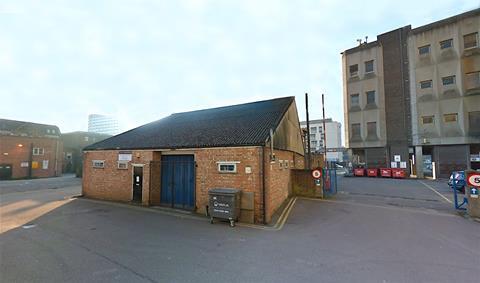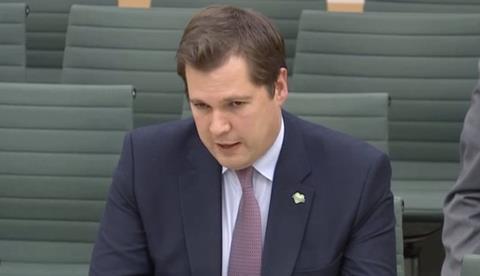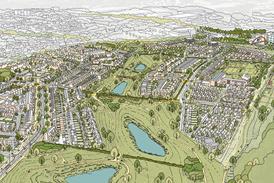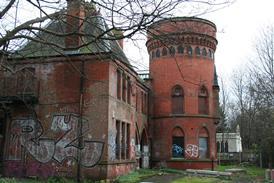UCL academic says extra permitted development homes come at cost of ’really poor quality housing’
The author of an official study into the quality of homes produced under permitted development rights has hit out at the government’s decision to expand the system, and accused ministers of basing their decision on “ideology”.
A government-commissioned independent report compiled by UCL academic Dr Ben Clifford, published earlier this week, showed that just a small fraction of homes created under permitted development (PD) rights met national space standards, and were in general of worse quality “in relation to a number of factors widely linked to the health, wellbeing and quality of life” of occupants.
Despite this, the government on the same day published new regulations further expanding the use of PD rights to allow upward expansions of existing homes and the demolition and rebuild of vacant homes and offices. The regulations will come in to force on August 31.

Permitted development rights, which allowed the conversion of a former industrial building in Watford to flats without windows (pictured, left), are a form of approval in principle by the government of certain prescribed forms of development. Applications made under the permitted development regime therefore bypass normal planning processes.
Clifford, associate professor in spatial planning and government at UCL’s Bartlett School of Planning, told Building Design’s sister magazine Housing Today that the removal of planning risk through the expansion of PD rights had made it easier for developers to make profit, but that “this comes at the cost of the possibility of really poor quality housing and the burden on local communities, particularly opportunity costs around the loss of affordable housing and the impact on local social and green infrastructure”.
He said: “In most cases, I do not think the price is worth it,” adding that, “I do not think the evidence in the report is particularly supportive of that [government decision to further expand PD rights]”.
In particular, he said was disappointed by the government’s failure to do anything about the tiny size of flats identified through his study. Clifford’s report found that just 22% of conversions produced under PD rights met national space standards, compared to three quarters delivered under the planning process. A number of schemes were found containing flats as small as 16sq m, and three quarters of the homes studied were single aspect.
In comparison the government’s own space standard sets out that the minimum size of a studio flat for one person should be 37sq m, more than double the size of many PD-produced apartments.
>> Julia Park: What is it like to live in a 13sq m former office?
>> Julia Park: The PM’s ‘build build build’ mantra is out of step with the public mood
Clifford said: “The biggest issue for me is, I think, the failure to do anything about space standards. This is at the root of many problems for residents of these conversions. There was a lot of evidence about that in the report, and the lack of consequential action is disappointing.”
He said the government should instead be focusing on creating more homes through support for local authority housebuilding, but that “that doesn’t really fit the ideology or approach of the government”.
Clifford welcomed the introduction of some limited safeguards in the PD rights system made as part of the government’s announcement. From now on, both existing conversion PD rights and the new rights announced this week will require developers to submit full floorplans and enable councils to turn down schemes without adequate natural light. However, he said these new stipulations could place a burden on local authorities if the limited prior approval fees weren’t increased to take account of the additional work in processing the applications.
Following the government’s announcement on Tuesday, RIBA president Alan Jones branded the government decision to expand PD rights “disgraceful”. The RIBA, the Royal Town Planning Institute, the RICS and the Chartered Institute of Building joined forces to issue a strongly worded open letter to housing secretary Robert Jenrick criticising the move. Other architects also weighed in.

Announcing the plans, Jenrick (pictured, right) said the changes were designed to deliver much-needed new homes and revitalise town centres across England by cutting out unnecessary bureaucracy.
>> Also read: Architects accuse government of arrogance and breathtaking lack of understanding over permitted development
Since the introduction of a raft of change-of-use PD rights in 2013, including the right to convert offices into homes, official data shows that more than 60,000 homes have been created using the PD rights.
At prime minister’s questions this week, Labour MP Clive Betts, chair of the housing select committee said the 16sq m flats were the same size as Boris Johnson’s ministerial limousine, and called on the government to reverse the move.
Johnson said: “We will ensure that we not only build back better and more beautifully, but that we give people the space they need to live and grow in the homes that we will build.”
















1 Readers' comment